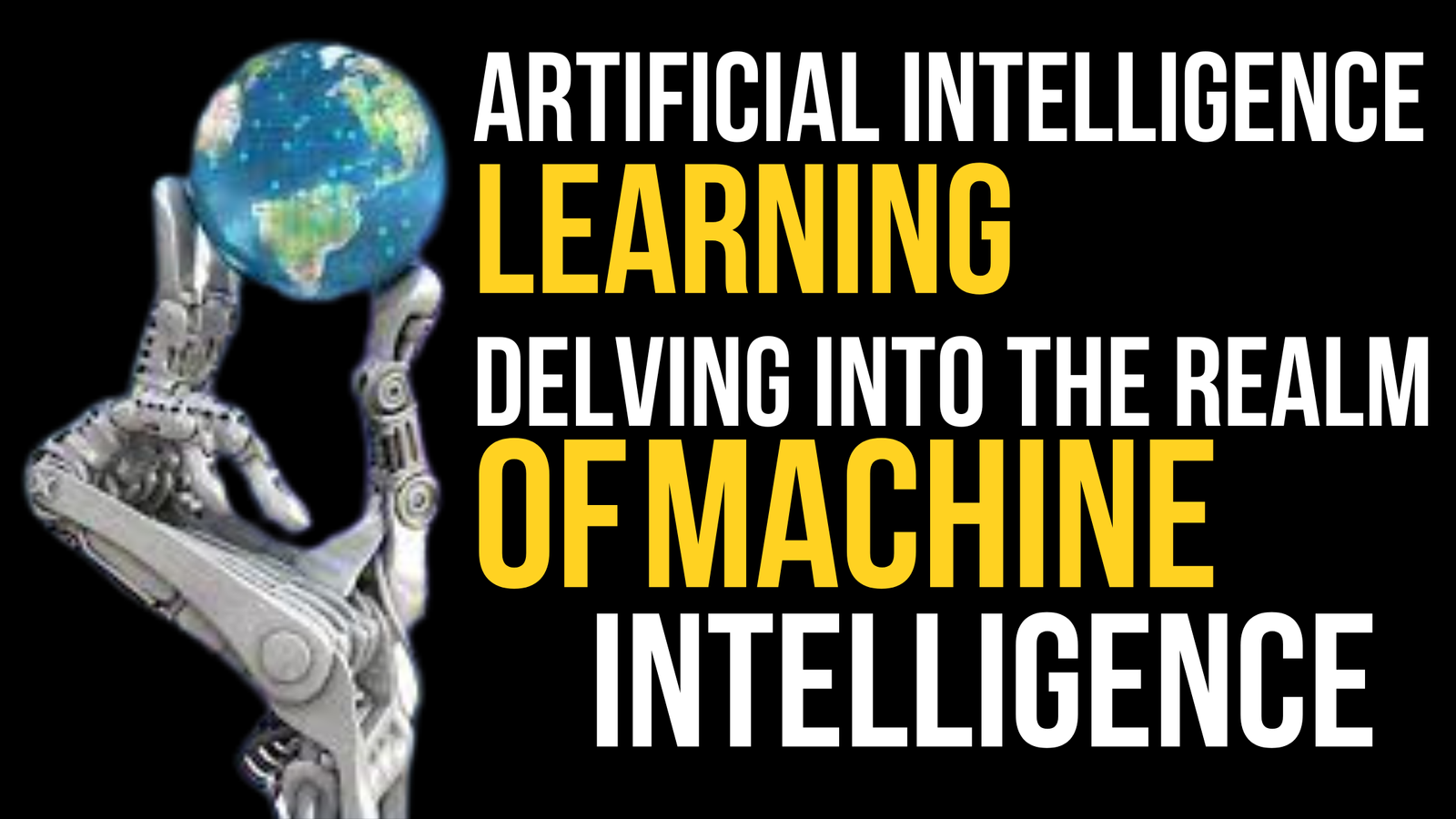Artificial intelligence (AI) has emerged as a transformative power in the cutting-edge world, changing businesses and shaping our routines. AI is at the core of AI, a subfield that engages PCs to gain information without unequivocal programming. This exceptional ability enables machines to recognize designs, make forecasts, and adjust to new situations, reflecting the mental cycles of human insight.
Unveiling The Mechanisms Of Artificial Intelligence Learning
Artificial Intelligence learning encompasses a diverse range of algorithms, each with its unique strengths and applications. Among the most prominent approaches are.
Supervised Learning
This method trains Artificial Intelligence on labelled data, associating each input with a corresponding output. The algorithm learns to map inputs to outputs, enabling image classification and spam filtering tasks.
Unsupervised Learning
Dissimilar to directed learning, solo calculations manage unlabeled information. They expect to find examples and design inside the info, uncovering hidden connections and bits of knowledge.
Organizations often use unsupervised learning in customer segmentation and anomaly detection tasks.
Support Learning
This approach takes motivation from social brain research, where machines advance by collaborating with their current environment. Through experimentation, the calculation tries to expand compensates and limit punishments, slowly working on its exhibition. Support learning is appropriate for errands, including complex direction and successive collaborations, like game-playing and mechanical technology.
Revolutionizing Industries And Shaping Our Lives
The impact of Artificial Intelligence learning extends far beyond the realm of computer science. It has permeated various industries, transforming how we work, interact with technology, and understand the world.
- Healthcare: Artificial Intelligence learning algorithms analyze medical images, predict patient outcomes, and develop personalized treatment plans.
- Finance: Financial institutions employ machine learning to detect fraud, assess creditworthiness, and optimize trading strategies.
- Manufacturing: Artificial Intelligence learning drives predictive maintenance, optimizing production processes, and automating quality control.
- Transportation: Self-driving cars, traffic management systems, and route optimization rely heavily on machine learning algorithms.
- Retail: Personalized recommendations, targeted advertising, and demand forecasting are all powered by machine learning.
Embracing The Future Of Artificial Intelligence Learning
As Artificial Intelligence learning continues to evolve, its potential to transform society is immense. We can imagine a future where AI consistently coordinates into our lives, helping us in tasks from routine to complex, upgrading our efficiency, and growing comprehension of how we might understand the world.
We must bridle the power of AI, address moral considerations, and ensure that we create and deploy AI responsibly, aligning with human values and promoting fair outcomes.
Benefits Of Artificial Intelligence Learning
Personalized Learning
AI can create customized learning experiences for each student. This means that students can learn at their speed and in the most ideal way. AI can likewise recognize battling understudies and furnish them with extra help.
Real-Time Feedback
Artificial intelligence can give students continuous input on their work. This can assist understudies with recognizing their assets and weaknesses and working on their learning.
Adaptive Learning
One can utilize AI to create adaptive learning frameworks that adjust to the requirements of each student. This means that students can always get the proper challenge and support.
Increased Engagement
Users can use AI to create more engaging learning experiences for students. This helps keep students motivated and interested in learning.
Further Developed Results
Studies have shown that simulated intelligence-controlled learning can further develop understudy results. For instance, a concentration by the College of Chicago found that understudies who utilized an AI-controlled learning stage learned more than understudies who used conventional techniques.
Admittance To Instruction
AI can instruct students who wouldn’t, in any case, have it. For example, AI-powered learning platforms can educate students in remote areas or with disabilities.
Reduced Costs
AI can be used to reduce the costs of education. For instance, AI can robotize tasks like reviewing papers and giving feedback. This can free instructors to zero in on additional essential undertakings, like educating and supporting understudies.
Risks Of Artificial Intelligence Learning
Artificial intelligence (AI) is quickly advancing and might change numerous parts of our lives. As it may, likewise with any vital innovation, there are additional potential dangers related to man-made intelligence. These dangers can be comprehensively ordered into three primary regions.
Dangers
People can use artificial intelligence frameworks to create autonomous weapons that may cause harm without human intervention. Additionally, hackers could potentially manipulate or compromise AI scenarios, leading to harmful consequences.
Social Risks
AI systems could be used to manipulate or control people or to spread misinformation. Additionally, AI systems could exacerbate existing social inequalities.
Economic Risks
AI could lead to widespread job displacement as AI systems can perform tasks currently done by humans. Furthermore, artificial intelligence could be utilized to create new economic inequality. It is fundamental to carefully consider the possible dangers of AI before sending these advances. We should foster shields to guarantee that AI is utilized securely, capably, and morally.
Here Are Some Of The Specific Risks Of AI learning
- Bias: AI systems can learn preferences from the data they are trained on. This can prompt victimization in particular gatherings.
- Explainability: It may be hard to comprehend how simulated intelligence frameworks decide. This can make it try to trust man-made intelligence frameworks and consider them responsible for their activities.
- Security: Artificial intelligence frameworks can be helpless against cyberattacks. This could allow attackers to manipulate AI systems to cause harm.
- Control: As AI systems become more sophisticated, they may become difficult to control. This could lead to AI systems acting autonomously and without human oversight.
How To Get An Artificial Intelligence Learning Course For Free
Our website provides you with a complete course. If you want it, click on the Link Which are given below.
LANGUAGE: Urdu | Hindi
A – Z Course For Beginner To Advance Level
DOWNLOAD LINK:
Download Now
Overall
Artificial Intelligence (AI) rapidly transforms our world, impacting various industries and solving complex problems. Despite its remarkable progress, AI learning faces challenges like bias, explainability, and ethical considerations. Addressing these difficulties in AI’s mindful and moral use is significant. Artificial intelligence’s enormous potential lies in its capacity to robotize assignments, further develop effectiveness, and give new experiences, forming the eventual fate of our reality.
Frequently Asked Questions About Artificial Intelligence (AI) Learning
What is AI learning?
Active Voice: Machines’ ability to learn from data without being explicitly programmed is a subfield of artificial intelligence, also known as machine learning. AI systems can improve their performance on a given task by receiving additional data.
How does AI learning work?
AI learning algorithms typically involve three main steps:
- Data collection and preparation:
Handling social affairs and cleaning the information that will be used to train the artificial intelligence model is involved.
- Model training: The information is utilized to prepare the artificial intelligence model, which determines how to distinguish examples and connections in the news.
- Model evaluation and deployment: The trained model is evaluated on its performance on a separate dataset. If the model performs well, it is deployed to make predictions or decisions on new data.
What are the different types of AI learning?
There are three main types of AI learning.
- Supervised learning: In supervised learning, the AI model is provided with labelled data, which has been tagged with the correct answer. The model then determines how to plan the information to compare yield names.
- Unsupervised learning:
In unaided learning, the artificial intelligence model receives unlabeled information and discovers patterns or trends in the data.
- Support learning: The computer-based intelligence model learns through experimentation in support learning. It cooperates with a climate and gets compensations for making moves that lead to wanted results.
What are some real-world applications of AI learning?
Organizations utilize AI learning in a wide assortment of applications, including:
- Image recognition: AI learning can identify objects, faces, and scenes in images and videos.
- Natural language processing (NLP): Man-made intelligence learning can be utilized to comprehend and produce human language. Different applications use this, including machine interpretation, chatbots, and feeling examination.
- if you would like to read techbace articles hit the ball
- Recommendation systems: Simulated intelligence learning can suggest items, films, music, and different things to clients in light of their past behaviour and inclinations.
- Fraud detection: AI learning can identify fraudulent transactions and activities.
- Medical diagnosis: AI learning can enable doctors to diagnose diseases by analyzing medical images and data.
What are the ethical and social implications of AI learning?
AI learning can achieve many advantages for society. However, one should also consider moral and social ramifications.
A portion of the critical worries include.
- Bias and discrimination: AI systems can be biased if trained on biased data. This can lead to unfair or discriminatory outcomes.
- Job displacement: As AI systems become more sophisticated, they may automate tasks currently performed by humans. This could lead to job displacement and unemployment.
- Privacy and surveillance: AI systems can collect and analyze large amounts of personal data. This raises concerns about privacy and surveillance.
- Weaponization of AI: Developers could use AI to create autonomous weapons that could kill without human intervention.
- It is essential to have open and informed discussions about these ethical and social implications as AI develops.
What is the future of AI learning?
AI learning is a rapidly developing field, and undoubtedly, it will continue to impact our lives profoundly. Some of the key trends in AI learning include.
- The ascent of profound learning: Profound learning is a strong sort of artificial intelligence discovery that has progressed essentially lately.
- The rising accessibility of information: How much data is accessible to prepare artificial intelligence frameworks is developing dramatically.
- The advancement of new equipment: Researchers are creating new equipment designs, such as neuromorphic processing, to accelerate the learning of simulated intelligence.
- The combination of AI and different advancements: AI incorporates various advances, like mechanical technology and the Web of Things (IoT), to make new and inventive applications.
Also, read our related articles. Click Here








